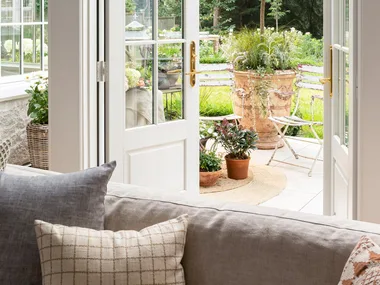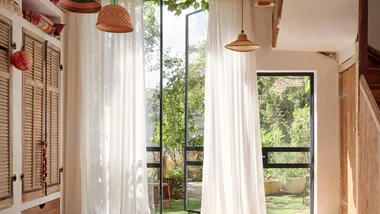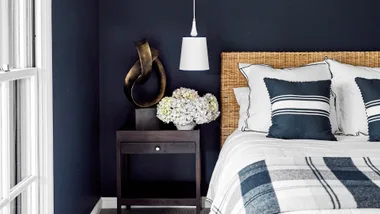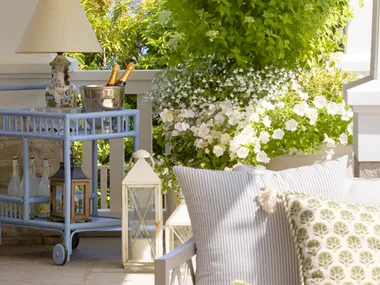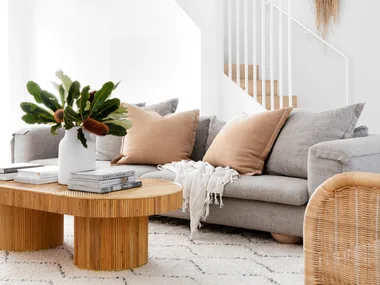Having a beautiful bathroom makes a big difference to feeling buoyant about your home. It should suit your style as much as your lifestyle. Used by you alone, children, guests, friends or relatives, plenty of pondering goes into it. There are tiles, basins, light fittings and fixtures to select. The layout will make or break the functionality, with smooth traffic flow to consider. You’ll need to decide on a built-in or freestanding bath, single shower or double. To help you design your dream bathroom, we spoke to Luli Farrell, co-founder of ABI Interiors, and the designers behind the bathrooms below to get their expert tips.

Love your layout
“Consider how the space will be used and ensure a natural flow between key areas like the shower, vanity and toilet,” recommends Mitchell Young, project manager at Reitsma + Associates. “Maximising natural light and creating clear zones for different functions helps the space feel open and organised.”
He says the placement of essential items, such as mirrors, towel rails, storage and feature lighting is crucial. For a renovation, your budget might impact the plan. “Aim to keep plumbing aligned with existing pipes to minimise costs,” suggests Luli. Putting in adequate electrical outlets and considering ventilation is also key.
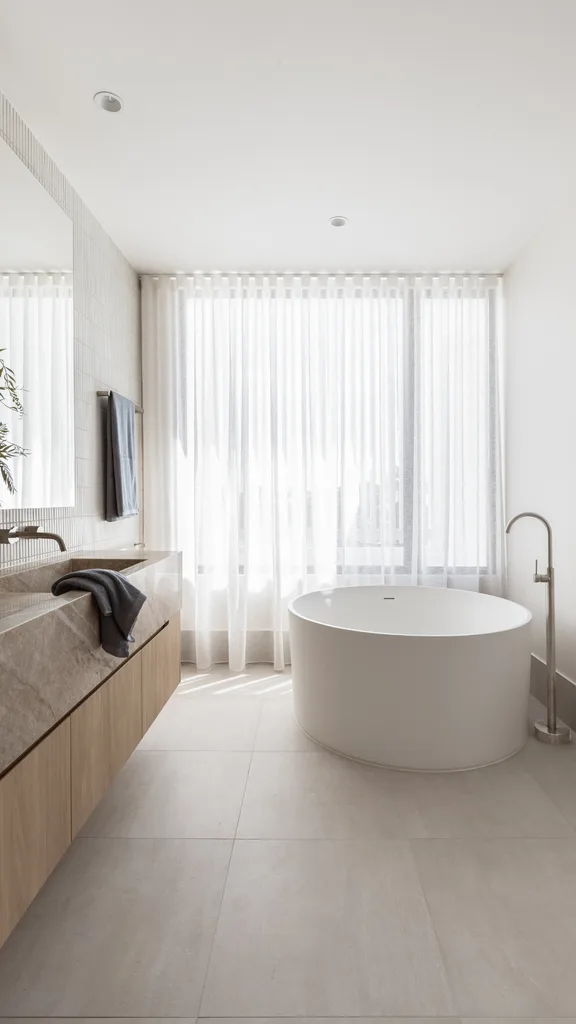
Tile files
“As tiles are usually on all walls of a bathroom, they’re critical to get right,” says Georgina Twyford, creative director at Studio Yugen. “We only ever select two tiles – one large format for the floors and majority of walls to create a feeling of space, and a feature tile, usually behind the vanity where they won’t get wet.” This minimises the grout lines in the splash zones, making cleaning easier.
“Light-coloured tiles create an open, airy feel, while darker tiles create a sense of drama and elegance,” says Luli. “Patterned tiles add personality but should be used in moderation to avoid overwhelming the space.
“Tapware can make or break a bathroom’s design. For this project (above), we chose the ABI Interiors ‘Milani’ set in Brushed Nickel”
— Mitchell Young, Reitsma + Associates

Shine a light
“Natural light is an important part of the design process for a bathroom. It makes the space feel alive,” says Jake Cumberland, who designed his home, The Surrounds, pictured above. “It’s key to open your bathroom to the northern aspect to capture that warm desired sun. If that’s not possible, skylights are a fun way to bring light in or maximise it,” he says.
As bathrooms are so often used at night, supplementary lighting is also crucial. “Face-forward LED lights around the mirror are ideal for tasks like hair and make-up, while soft, dimmable overhead LEDs or sconces create a spa-like atmosphere, perfect for unwinding in the evening,” says Luli. A sensor LED strip under a floating vanity will light a path at night.
Vanity fair
“A well-designed vanity serves as the visual anchor of the bathroom,” says Mitchell. “Materials and finishes should harmonise with the overall palette, while the basin and tapware should be complementary without stealing the show.”
Select your tapware designs first, followed by other elements such as cabinetry, and floor and wall tiles.
“The style and finish of fixtures – whether sleek, chrome, matte black or brushed brass – will help define the overall design, whether you’re aiming for a modern, coastal, or classic provincial look,” explains Luli. “Coordinating tapware with hardware like towel rails and cabinet handles ensures a cohesive look.” Durable, high-quality pieces that are easy to clean will remain stand-out features for years to come.

Showered in love
“Showers for most people are an essential way of staying clean and, most of the time, take precedence over a bath,” says Jake. “I love the double shower option. It’s a way to provide a sense of luxury. However, they do take a bit of space, so definitely can’t be an afterthought.”
A single shower and bath is a go-to, as seen above. “In this particular design, the built-in bath worked perfectly with the size of the bathroom,” says Jake. The benefit of built-ins is that they’re easier to clean – freestanding baths can be more difficult, yet have undeniable visual appeal.
“Baths are a beautiful way to unwind from a big week or a great place to bathe little ones. It creates a feeling of relaxation.”
Three top tips from the ABI Interiors team:
- Assess your needs: Too little storage can lead to clutter, while too much can be underutilised. List everything you need to store in the bathroom, considering your daily routine and lifestyle. This helps you determine the storage capacity required.
- Look at your layout: Evaluate the floor plan and set your priorities. Would you prefer an extralarge shower or additional storage? Decide what you want to include and see if there is adequate space for everything. Assess the size of your vanity or cabinetry and whether additional storage solutions are necessary.
SMART STORAGE
- Choose specifics: Based on your needs and space, decide on the best types of storage for your bathroom. Do you want floating open shelving or drawers and cupboards? Add in other organisational tools such as baskets and wall hooks to maximise functionality.

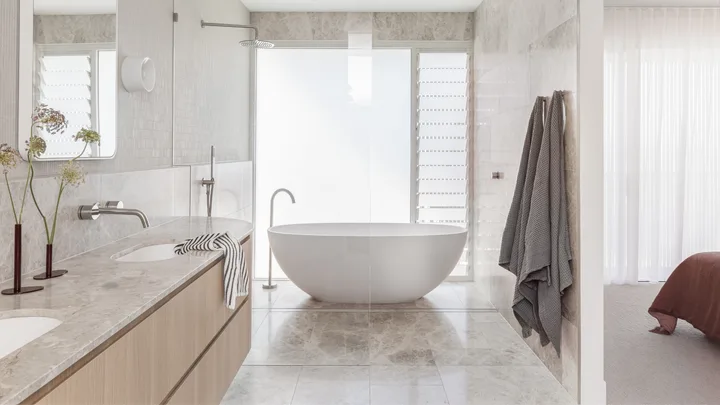 ABI Interiors
ABI Interiors
